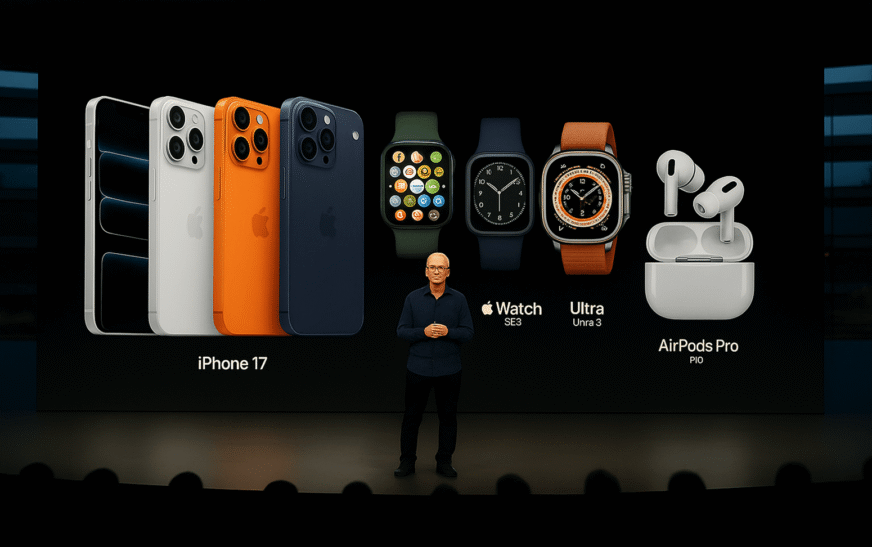Apple’s September 9, 2025 event highlighted the company’s familiar strategy steady refinements in hardware, software that feels sharper because of those improvements and a few meaningful updates to cameras and health tracking. Apple also made sure that more complex features were available at lower prices so that more people could use its ecosystem. This review takes a closer look at the iPhone 17 lineup and the new Apple Watch models Series 11, SE 3 and Ultra 3 exploring what’s new, what stands out and how each product fits into Apple’s bigger picture.
Event Snapshot
Apple’s tried-and-true recipe for a speech was a slick stage show and a focused push on iPhones, smart tech and software changes. The new iPhone 17 families and updated Watch range went on pre-order on Friday, September 13, at 5 a.m. PT. They will be available in stores on September 19, 2025. Apple also stated that iOS 26 and watchOS 26 would be released in the middle of September. This means that current devices will get new features just a few days before the new hardware hits stores.
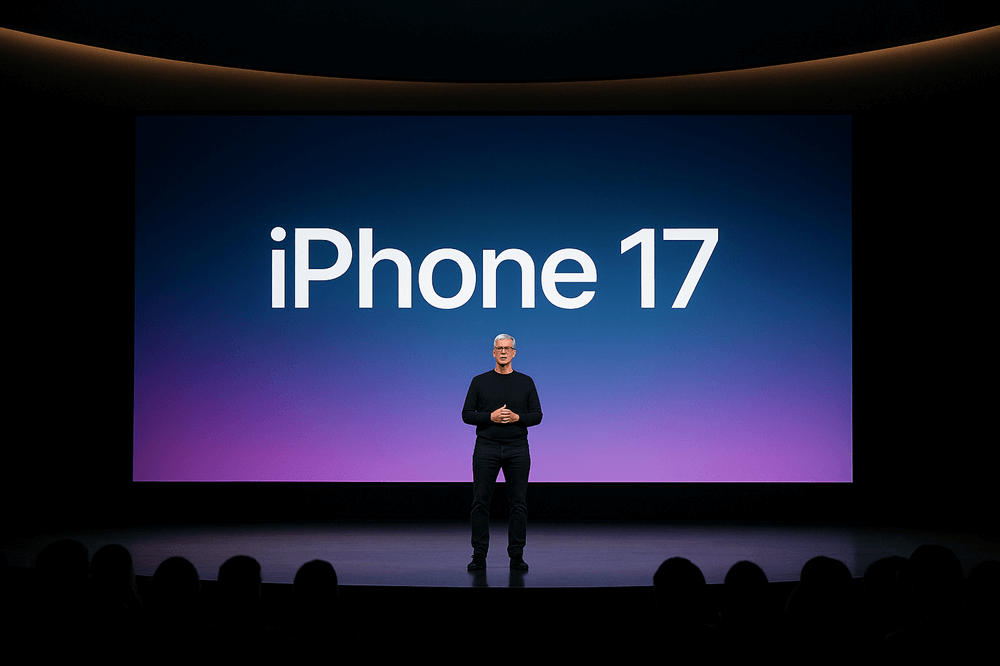
iPhone 17 family what’s in the box (and out of it)
Series: iPhone 17, 17 Air, 17 Pro and 17 Pro Max.
Apple’s strategy is clear bring Pro features to the mainstream while keeping differentiation through design, thermal engineering, camera hardware and battery life across the Pro and Air variants.
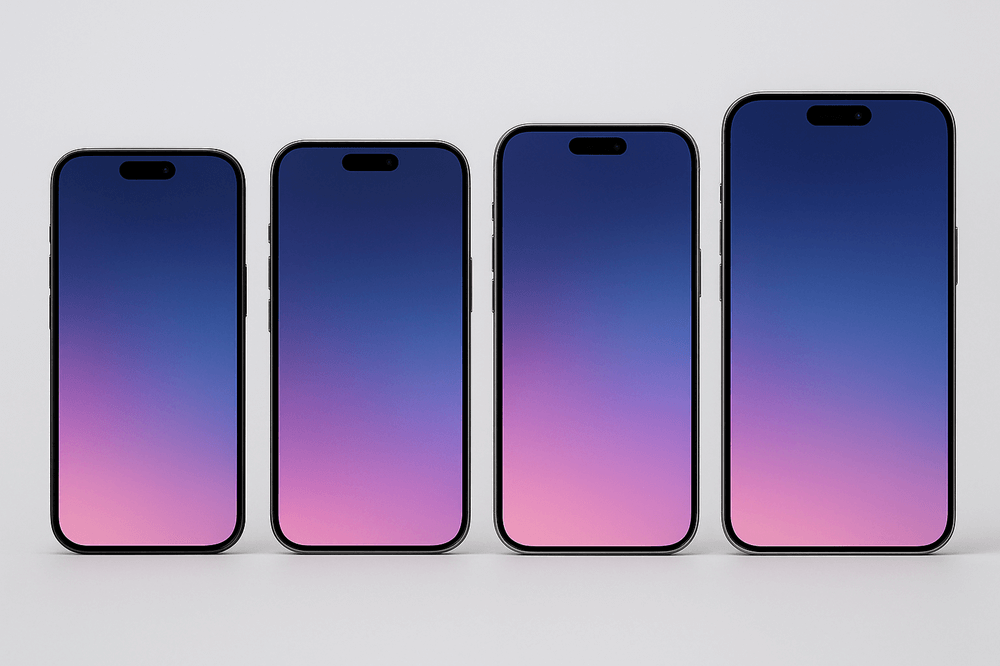
Design and displays
- iPhone 17 (standard): The display is a 6.3-inch Super Retina XDR with ProMotion up to 120Hz. The Ceramic Shield 2 and thinner bezels make it more durable and the curved edges make it easier to hold.
- iPhone Air: The thinnest iPhone Apple has made thus far, at 5.6 mm, is made of titanium. Puts portability ahead of multi-lens gear.
- Pro and Pro Max: The Pro models introduce subtle design distinctions (premium finishing options, vapor‑chamber cooling in the Pro family) and step up display size (the Pro Max is Apple’s largest iPhone at ~6.9 inches on the Pro Max). The Pro displays adopt higher peak brightness figures and refined anti‑reflective coatings.
Performance and silicon
- A19 / A19 Pro chips: Apple’s newest silicon powers the family. The standard iPhone 17 ships with A19, while the Pro and Pro Max use A19 Pro and have additional thermal headroom and sustained performance via vapor cooling. Apple emphasized neural‑engine improvements for on‑device AI (image processing, Apple Intelligence features, Live Translation and more). This is a planned hardware and software combination. The faster cores and stronger Neural Engine make features useful instead of merely improving benchmarks.
Cameras and imaging
- Front camera – Center Stage: All versions include an 18MP front camera with Center Stage. Supports Dual Capture (recording from both the front and back), better framing and better performance in low light.
Rear cameras
- iPhone 17: Two 48MP cameras (one primary and one ultra-wide). Computational fusion makes HDR and low-light details clearer.
- iPhone Air: 48MP primary camera only, which means you can’t change the lens, yet it still takes great flagship-level photos.
- Pro / Pro Max: Three 48MP Fusion systems one for wide shots, one for ultra-wide shots and one for telephoto shots. Pro Max has an optical zoom of up to 8×. Advanced video tools include ProRes workflows and spatial video for Vision devices.
In short, Apple doubled down on computational photography, ensuring even the thinnest Air delivers flagship-quality shots.

Rear systems
- iPhone 17 (base): Dual 48‑MP Dual Fusion system (Main + Ultra‑wide). Apple leaned heavily on computational merging to produce high dynamic range and low‑light detail.
- iPhone Air: A Fusion main camera (48MP) in a thin chassis it sacrifices some multi‑lens flexibility to stay slender but maintains strong main‑camera performance.
- iPhone 17 Pro / Pro Max: Triple 48MP Fusion sensors across wide, ultra‑wide and telephoto with the Pro Max offering the longest optical zoom in an iPhone this generation (Apple’s promotional materials showed up to 8× optical steps within the phone’s lens system). Advanced stabilisation, ProRes processes and spatial video support for Vision devices are some of the pro video capabilities.
Note: Apple’s camera marketing emphasizes the fusion of sensor hardware and computational pipelines, so raw sensor megapixels are only one part of the story image processing, AI denoising and HDR merging produce the results end users see.
Battery and Charging
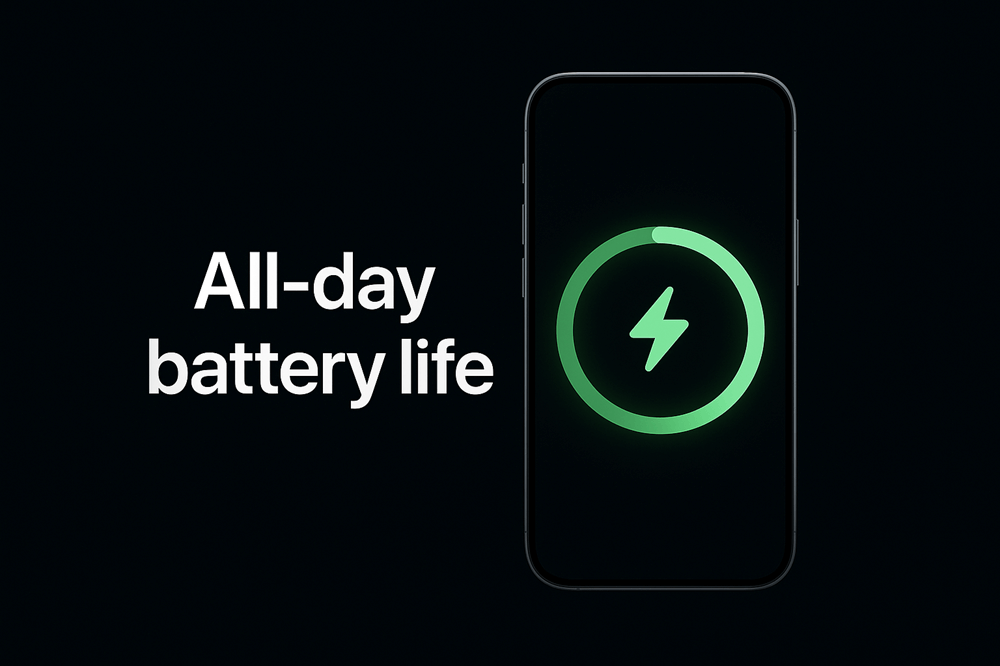
iPhone 17
The A19 chip in the iPhone 17 made it more efficient, allowing consumers to watch videos for longer and use the phone all day without problems. MagSafe 3.0 makes wireless charging faster and the magnetic hold stronger, so top-ups are faster and more steady.
iPhone 17 Air
The iPhone 17 Air is made of thinner titanium and has a slightly smaller battery, but Apple’s software optimisation makes sure it lasts through a whole day. The new MagSafe 3.0 is thinner, cooler and more efficient, which makes charging faster while preserving its rapid rates.
iPhone 17 Pro
The iPhone 17 Pro has a bigger battery, the A19 Pro chip and better cooling, which makes videos play for a lot longer than on the ordinary model. With MagSafe 3.0 handling quick and steady charging, it’s a strong fit for power users who spend long days on their phone.
iPhone 17 Pro Max
The iPhone 17 Pro Max remains Apple’s battery life leader. Its largest battery, combined with the efficiency gains of the new chip, pushes video playback to the top of the lineup and can even stretch to multiple days for lighter use. MagSafe 3.0 adds faster charging and a more precise wireless connection, making it easier to keep its large battery topped up.
Storage
iPhone 17
Apple has bumped the starting storage to 256GB across the entire iPhone 17 lineup. That’s the new baseline, with options going up to 512GB and 1TB for those who need extra space. Even the standard model now has plenty of room for apps, photos and videos without feeling cramped.
iPhone 17 Air
The iPhone 17 Air follows the same storage options, starting at 256GB and topping out at 1TB. It’s a solid mix of a slimmer design with enough capacity to handle heavy photo libraries, large apps or lots of downloaded content without asking users to trade storage for portability.
iPhone 17 Pro
The iPhone 17 Pro likewise starts at 256GB, but you can upgrade to 512GB or 1TB. These tiers are made for creators that shoot ProRes video or work with spatial capture. They give them the space they need to save projects locally without having to continually manage files.
iPhone 17 Pro Max
The Pro Max goes even further, with storage space of up to 2TB. It’s made for people who work with huge 4K video clips, raw photo libraries and big app collections. In other words, anyone who wants their phone to be a serious production tool.
Colors Across the iPhone 17 Lineup
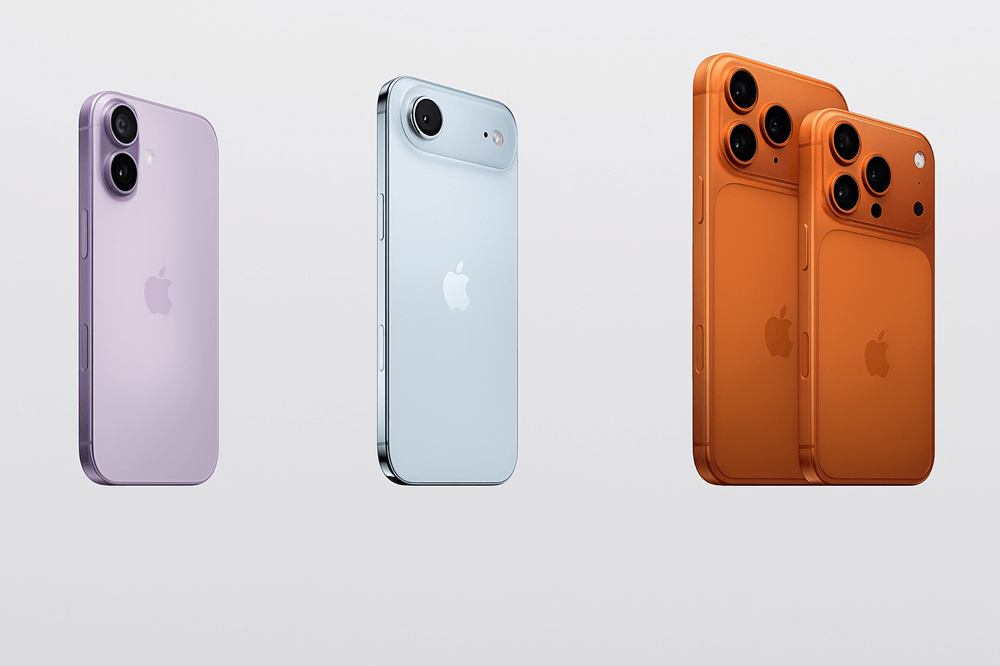
iPhone 17 (Standard)
The regular iPhone 17 comes in five colours Lavender, Sage, Mist Blue, White and Black. It has both fun new colours and timeless classics, so people who use it every day have both new and familiar options.
iPhone 17 Air
The iPhone 17 Air looks more expensive in Sky Blue, Light Gold, Cloud White and Space Black. The colours that go with the thin titanium design strike a balance between classic and modern.
iPhone 17 Pro & iPhone 17 Pro Max
For the Pro models, Apple went bolder. Offered in Silver, Deep Blue and Cosmic Orange, these finishes make the devices stand out and underline their professional, high-end status.
Connectivity and OS
- iOS 26 arrives in mid-September, bringing features like live translation, Smart Summaries in supported apps and a refreshed Liquid Glass interface. The iPhone 17 lineup is built to take full advantage of these updates, making the experience feel more seamless right out of the box.
- Apple also emphasized Wi-Fi 7 and broader 5G coverage. These upgrades are meant to keep the phones ready for the future, whether it’s cloud gaming, streaming AR/VR content or handling massive spatial video uploads.
Pricing & availability
According to Apple’s official store, U.S. pricing for the unlocked iPhone 17 lineup starts at the usual MSRP levels before carrier deals or trade-in discounts.
- iPhone 17: In most places, the base model of the iPhone 17 with 256GB of storage costs $799. Apple has priced the iPhone 17 Air more since it has a titanium shell and a Pro-level CPU. Depending on the configuration, the price is approximately $999.
- iPhone 17 Pro: From $1,099.
- iPhone 17 Pro Max: From $1,199 (higher with larger storage).
Preorders began on September 12, and the book will be available in stores starting September 19. There are also trade-in programs and provider deals that Apple is promoting, which can help many buyers get a much better deal.
iPhone 17 Series Comparison Table
| Model | Display | Processor | Cameras | Storage | Features | Price (USD) |
| iPhone 17 | 6.3″ Super Retina XDR, 120Hz | A19 | Dual 48MP (main + ultra-wide) | 256GB–1TB | Ceramic Shield 2, thinner bezels and Dual Capture | From $799 |
| iPhone 17 Air | 6.3″ Super Retina XDR, 120Hz | A19 Pro | 48MP main | 256GB–1TB | Titanium, thinnest iPhone and Pro performance | Around $999 |
| iPhone 17 Pro | 6.6″ ProMotion OLED, 120Hz | A19 Pro + vapor cooling | Triple 48MP Fusion | 256GB–1TB | ProRes video, Spatial Video and anti-reflective coating | From $1,099 |
| iPhone 17 Pro Max | 6.9″ ProMotion OLED, 120Hz | A19 Pro + vapor cooling | Triple 48MP Fusion + 8× telephoto | 256GB–2TB | Longest battery, max zoom, largest iPhone yet | From $1,199 |
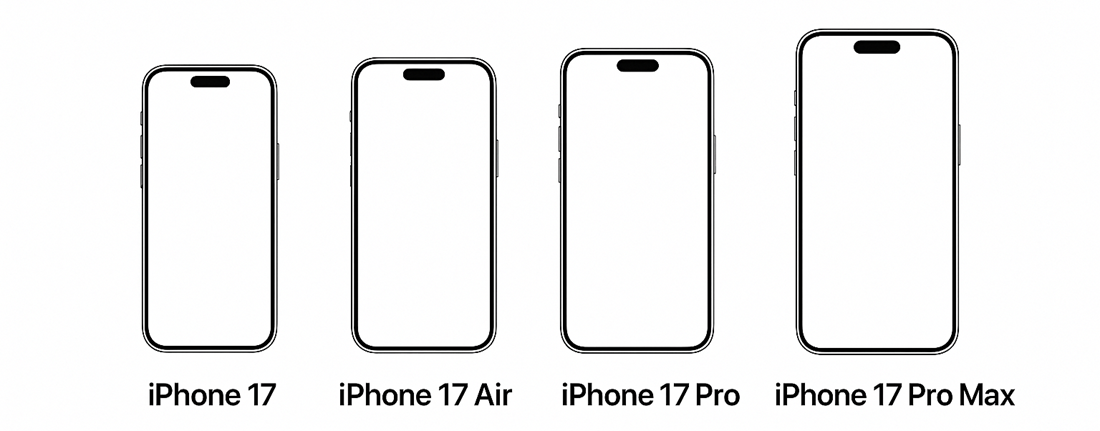
Apple Watch lineup: Series 11, SE 3, Ultra 3 what changed
Apple’s watch refresh this year focused on health insights, connectivity and battery. The company clearly marketed different watches at different buyers the Series 11 for mainstream buyers who want the latest health features, the SE 3 as the value entry and the Ultra 3 for athletes and adventurers who need the most rugged hardware and longest battery life.
Apple Watch Series 11
Series 11 consolidates Apple’s health‑first messaging:
- Hypertension notifications and sleep score were called out as headline features, alongside continued ECG, blood‑oxygen and improved motion sensors. Apple claims improved scratch resistance for certain case materials. Battery is still roughly “all day” with Apple‑stated numbers around 24 hours for typical usage.
- A new S11 SiP and brighter Always‑On Retina display keep the interface snappy and visible outdoors. watchOS 26 brings adaptive widgets and new activity analytics across the family.
Apple Watch SE (2025 refresh)
The SE receives a processor bump and inherits a subset of health features (sleep score, wrist temperature sensing and some of the retrospective cycle insights). The idea is to keep Apple’s entry price lower while letting buyers upgrade later to Series or Ultra models if they want deeper sensors.
Apple Watch Ultra 3
Ultra 3 is purpose‑built for extended outdoor use and safety:
- Apple says that the watch’s battery lasts up to 42 hours on average and up to 72 hours in Low Power Mode. The display surface is substantially bigger thanks to LTPO3 and reduced bezels. Apple says that for continuous workout monitoring with complete GPS and heart rate in Low Power Mode, it lasts roughly 20 hours.
- Built‑in two‑way satellite communications are a notable addition, Ultra 3 can text emergency services, message friends and share a location off‑grid Apple includes two years of satellite services for the device at launch. Satellite support on a device this small required re‑engineering the radio and antenna, per Apple.
- The Ultra 3 also has 5G cellular service on approved carriers, better GPS accuracy and more ruggedness aimed at sports and outdoor professionals. The main differences between this and Series 11 are the battery and display enhancements. Notification of hypertension and regulatory status.
Apple announced that the hypertension notice would be available with watchOS 26 and that it has been approved by regulators in several areas. Recent news says that the U.S. FDA approved the hypertension notifications and that Apple will start rolling out the feature to more than 150 areas soon after the event. This is a big step forward for wrist-watch health features that use optical sensors and long-term trend monitoring. The regulatory confirmation makes Apple’s claim that watches can assist with hypertension awareness more substantial (with the usual caveats that these are screening notifications, not diagnostic tools).
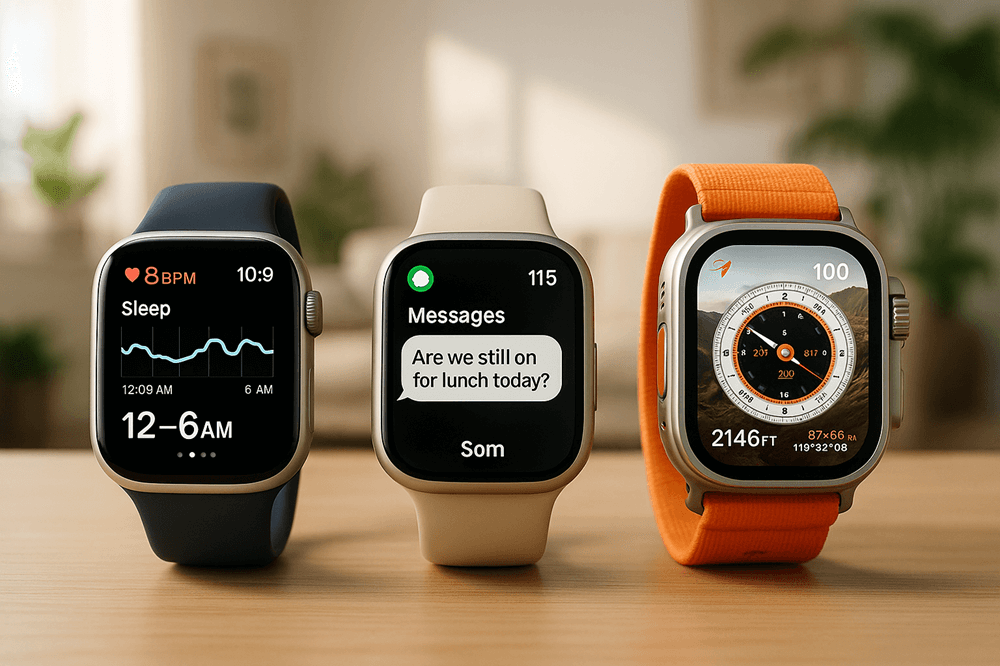
Apple Watch lineup: Series 11, SE 3 and Ultra 3
This year’s refresh centered on health, connectivity and battery. Each model is aimed at a different type of buyer Series 11 for mainstream health users, SE 3 for value-focused buyers and Ultra 3 for outdoor professionals.
Quick Comparison
| Model | Features | Battery Life | Price (USD) |
| Apple Watch Series 11 | Hypertension notifications, sleep score, ECG and brighter Always-On display | ~24 hours | From $399 |
| Apple Watch SE 3 | Sleep score, wrist temperature, cycle insights and budget-friendly | ~18 hours | From $249 |
| Apple Watch Ultra 3 | 42–72 hours, 5G, satellite messaging, rugged build and largest display | 42 hrs (72 in Low Power) | $799 |
Highlights by model
- Series 11: Adds hypertension notifications, improved sensors and a brighter Always-On Retina display. Runs on the new S11 SiP.
- SE 3: Budget option, inherits key health insights like sleep scoring and wrist temperature.
- Ultra 3: Purpose-built for athletes and adventurers. Gains satellite messaging, improved GPS, 5G cellular and up to 72 hours battery in Low Power Mode.
Apple Watch Pricing (2025 Lineup)
- Apple Watch Series 11: Starting at $399 (aluminum, GPS) and scaling higher with stainless steel or cellular options.
- Apple Watch SE 3: From $249, keeping it the most affordable Apple Watch while gaining new health insights.
- Apple Watch Ultra 3: The price is $799, which includes two years of satellite service that comes with the device.
AirPods Pro 3: The Audio Upgrade
Apple also unveiled the AirPods Pro 3, delivering the biggest leap in its premium earbuds since the original.
Key Features
- Noise Cancellation: Twice as effective as AirPods Pro 2, with Apple claiming industry-leading in-ear ANC.
- Sound & Fit: Redesigned acoustic architecture, better bass, wider soundstage. New foam-infused tips in five sizes (including XXS).
- Health Tracking: Built-in heart rate sensor (PPG) tracks heart rate and calories during workouts, reducing reliance on Apple Watch.
- Workout Buddy: AI-powered coaching via Apple Intelligence during exercise.
- Live Translation: Real-time language translation when paired with iPhone, powered by Apple Intelligence.
- Durability: Rated IP57 for dust, sweat and water resistance.
- Battery: Up to 8 hours of listening with ANC enabled.
- UWB Case: New Ultra Wideband chip improves Find My precision.
- Price: From $249, shipping September 19.
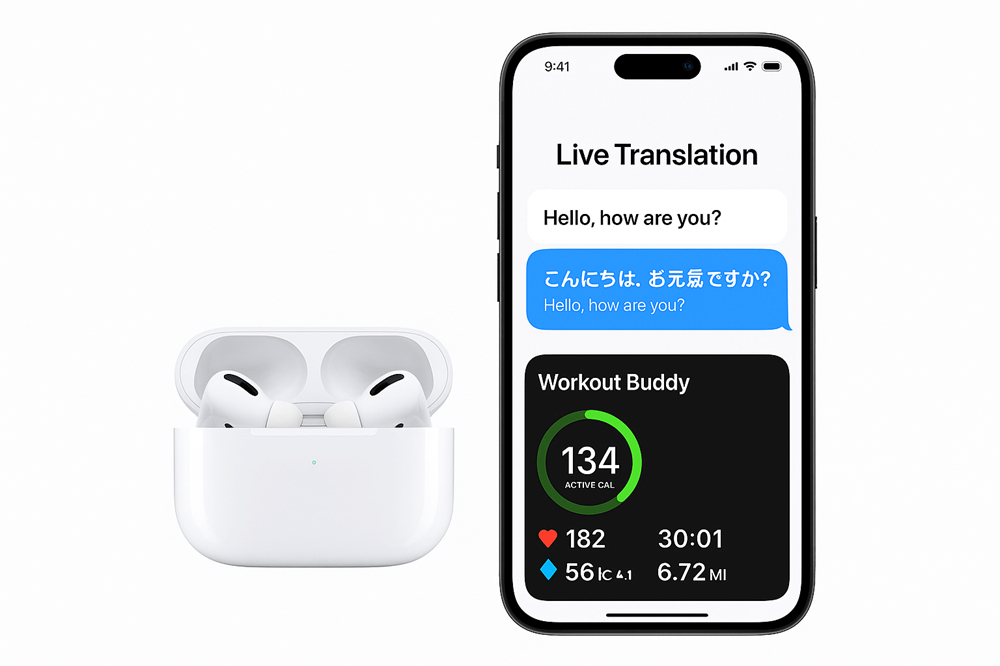
AirPods Pro 2 vs AirPods Pro 3: What Changed
| Feature | AirPods Pro 2 | AirPods Pro 3 |
| Noise Cancellation | Strong ANC | 2× stronger than Pro 2, industry-leading |
| Transparency Mode | Adaptive Transparency | Improved with clearer voice isolation, Conversation Boost+ |
| Sound Quality | Balanced audio, good bass | Redesigned acoustic architecture, wider soundstage and stronger bass |
| Ear Tips | 4 sizes (XS–L) | 5 sizes (XXS–L), foam-infused for comfort |
| Health Tracking | None | Heart rate sensor (PPG) + calorie tracking |
| Workout Features | Basic use with Fitness+ | Workout Buddy AI coaching |
| Live Translation | Not available | Yes, Apple Intelligence-powered |
| Durability | IP54 (dust/splash) | IP57 (dust, sweat, water) |
| Battery Life | ~6 hours with ANC | Up to 8 hours with ANC |
| Case Features | UWB chip for Find My | Improved UWB precision + lanyard loop |
| Price | $249 | $249 (same launch price) |
Software & ecosystem: iOS 26 and watchOS 26
Apple made sure that its software and hardware worked together. In mid-September, iOS 26 comes out with the Liquid Glass UI, Live Translation and better interaction with Apple Intelligence. watchOS 26 brings additional health insights and watch faces that change based on your needs. The ecosystem value proposition is that Apple sells a consistent experience across devices instead of just separate devices. For example, cross-device handoff, dual capture video and deeper workout synchronization are all instances of this.
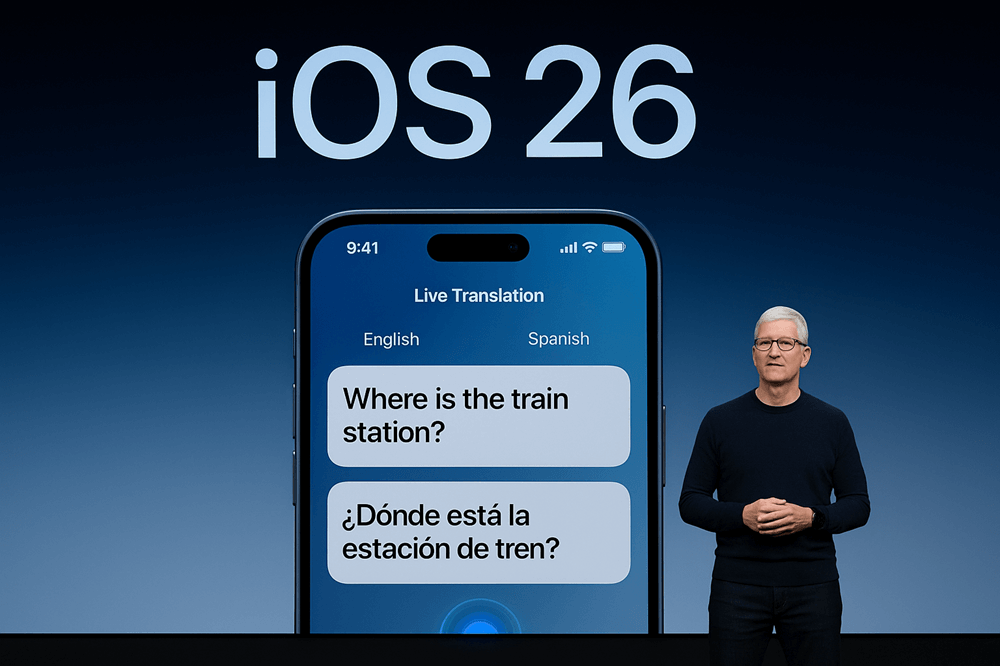
Sustainability & Materials
Apple reaffirmed its push toward environmental responsibility:
- iPhone 17 Air uses titanium blended with recycled aluminum.
- Packaging is now 100% fiber-based, eliminating plastics.
- Apple committed to expanding use of recycled rare earth elements in Taptic Engines and camera magnets.
- The Apple Watch range, notably the SE 3, is touted as an environmentally friendly starting point since it has a less carbon impact in production.
Apple is still working toward making its whole supply chain carbon neutral by 2030 and these initiatives are part of that effort.
Quick Buyer Guidance
- iPhone 17: Best balance of features and price for mainstream buyers.
- iPhone 17 Air: For users prioritizing slim design and lightness, without giving up performance.
- iPhone 17 Pro: Suited for creatives, gamers and professionals needing advanced camera workflows.
- iPhone 17 Pro Max: For power users who want the largest display, longest battery and maximum storage.
- Apple Watch Series 11: Great for health-conscious people who seek the latest news.
- Apple Watch SE 3: The best option for first-time purchasers or those on a budget.
- Apple Watch Ultra 3: Made for people who want to be outside, do sports or need a tough device that can connect to satellites.
- AirPods Pro 3: A premium upgrade for audiophiles, fitness enthusiasts and travelers needing top-tier ANC and live translation.

